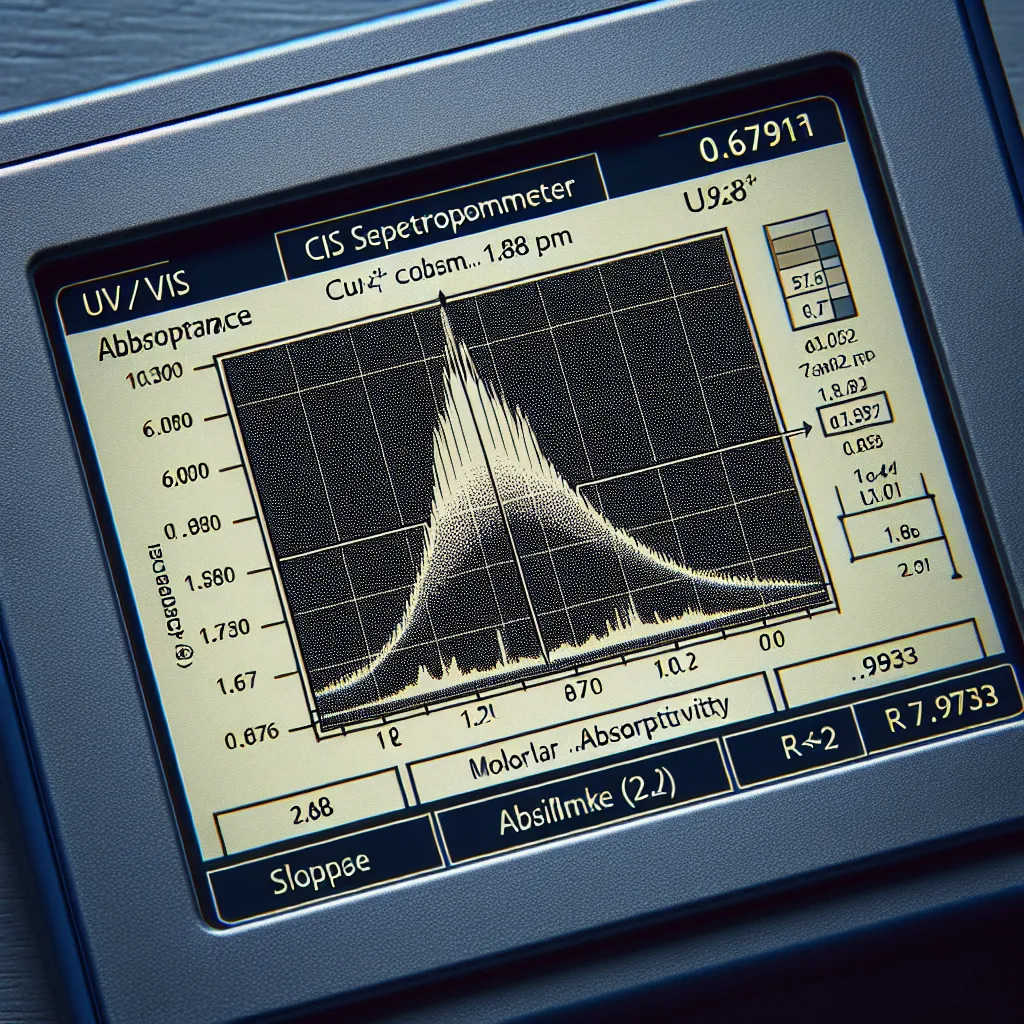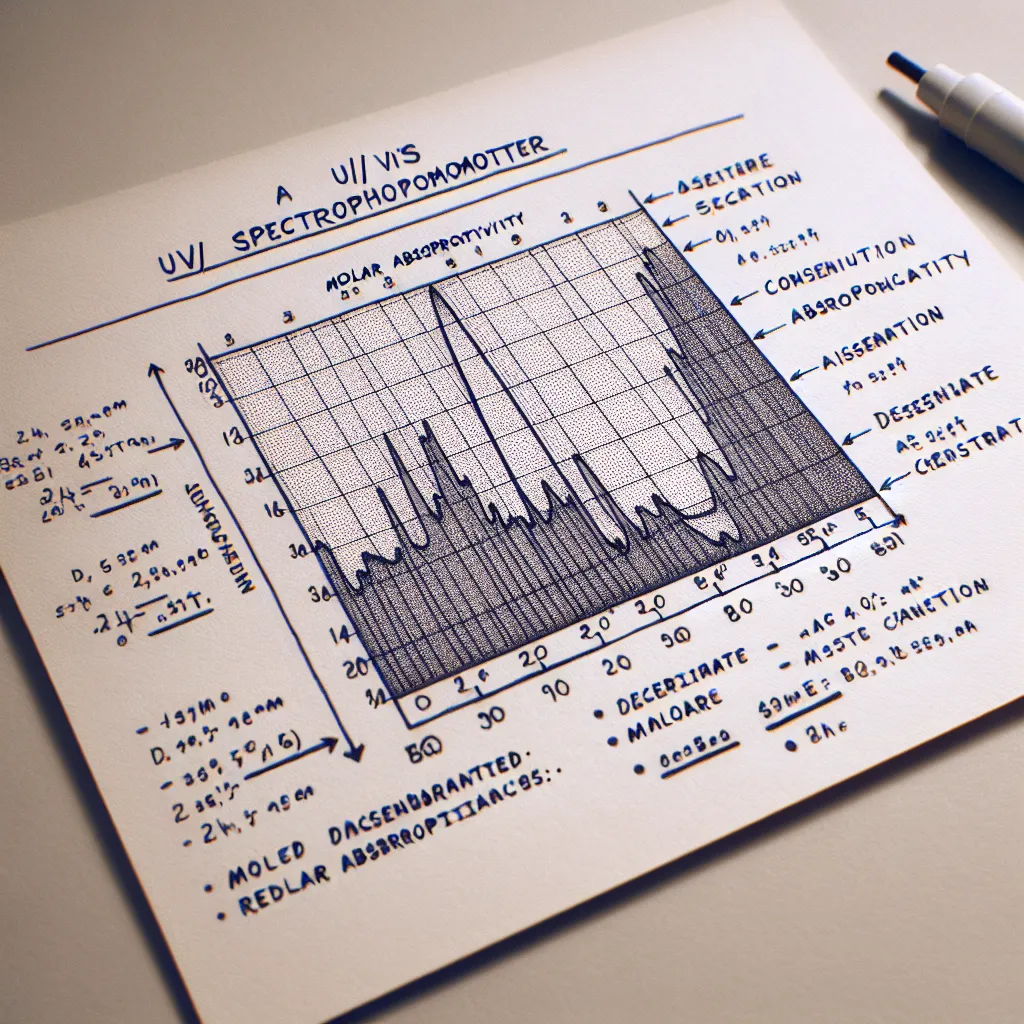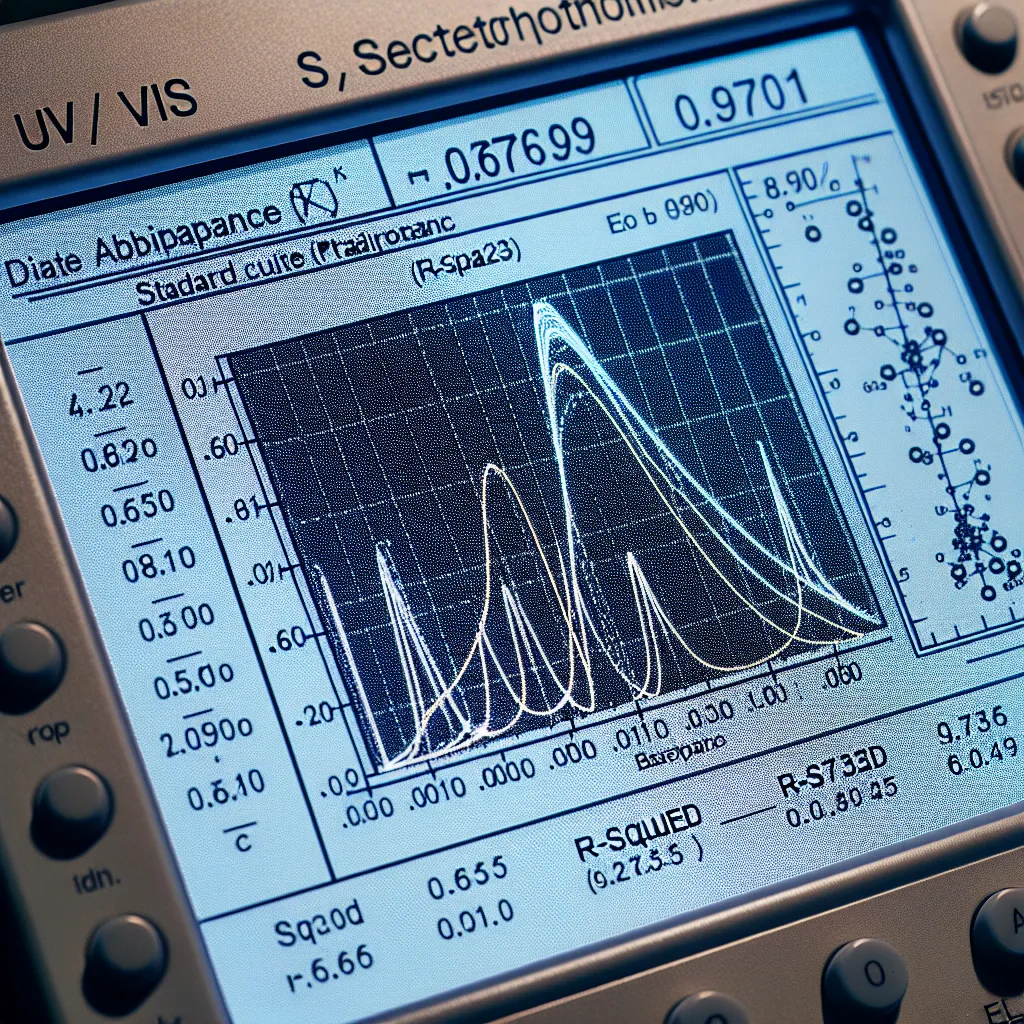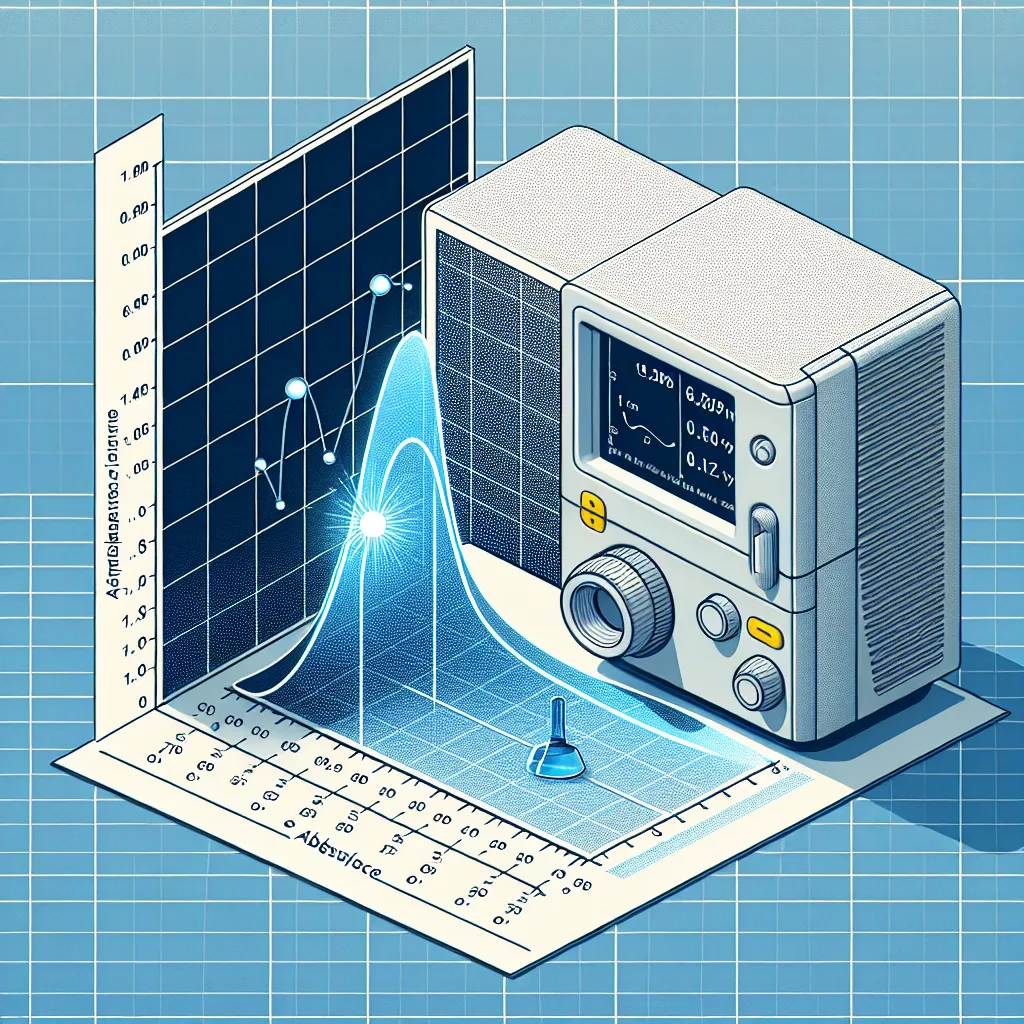Ask AI on The Internet
Question: Determination of Cu2+ concentration by making use of a UV/vis spectrophotometer PRACTICAL WAS CONDUCTED THE UNKNOWN CONCENTRATION FROM ABSORBANCE 0.6701 WAS FOUND FROM THE STANDARD CURVE TO BE 1.78 PPM THE SLOPE WHICH IS THE MOLAR ABSORPTIVITY WAS FOUND TO BE 0.1998 , THE R^2 WAS FOUND TO BE 0.9733 DISCUSS THE RESULTS AND CONCLUDE
Certainly! Let's break down the results and discuss them. ### Determining Cu²⁺ Concentration Using UV/Vis Spectrophotometry #### 1. Unknown Concentration: - **Measured Absorbance**: 0.6701. - **Estimated Concentration from Standard Curve**: 1.78 ppm (parts per million). #### 2. Standard Curve Details: - **Slope or Molar Absorptivity (\(\epsilon\))**: 0.1998. - **Coefficient of Determination (\(R^2\))**: 0.9733. ### Discussion: #### **Absorbance and Concentration Relationship:** - The absorbance measured using UV/vis spectrophotometry (0.6701) is directly linked to the concentration of Cu²⁺ ions in the solution via Beer-Lambert Law: \[ A = \epsilon \cdot c \cdot l \] where: - \(A\) is the absorbance, - \(\epsilon\) is the molar absorptivity (0.1998 in this case), - \(c\) is the concentration of the solution, - \(l\) is the path length (usually 1 cm in standard cuvettes). Since you have used a standard curve to determine the concentration directly, it simplifies the calculation and confirms that the concentration (1.78 ppm) correlates well with the measured absorbance. #### **Molar Absorptivity and Sensitivity:** - The molar absorptivity (\(\epsilon\)) value of 0.1998 indicates how strongly Cu²⁺ ions absorb light at the specific wavelength you used. This value is critical for understanding the sensitivity of your method: higher molar absorptivity means greater sensitivity. #### **Goodness of Fit (\(R^2\)):** - The \(R^2\) value of 0.9733 signifies how well the linear regression equation (standard curve) fits the experimental data. An \(R^2\) value close to 1 indicates a very good fit, meaning the concentration can be accurately predicted from the absorbance values. An \(R^2\) of 0.9733 suggests the data points fit the regression line very well, implying reliable and reproducible results. ### Conclusion: - **Reliable Concentration Determination**: The concentration of Cu²⁺ in your unknown sample was determined to be 1.78 ppm, as derived from the standard curve based on the measured absorbance. - **Accuracy and Reproducibility**: The high \(R^2\) value (0.9733) indicates that your standard curve accurately represents the relationship between absorbance and concentration, ensuring the reliability of your results. - **Sensitivity**: The slope or molar absorptivity (\(\epsilon\)) of 0.1998, while not extraordinarily high, is sufficient for detecting Cu²⁺ ions in the ppm range with reasonable sensitivity. Overall, the practical implementation of UV/vis spectrophotometry in determining the Cu²⁺ concentration has proved effective, providing reliable and reproducible results. Ensure to always calibrate your spectrophotometer with a good range of standards for more precise and accurate future measurements.
Think your answer is better than the AI's? Post it below.
Other Most Relevant Posts:
Question Tags
If you want your question answered by an AI, click here.







Post your own comment: